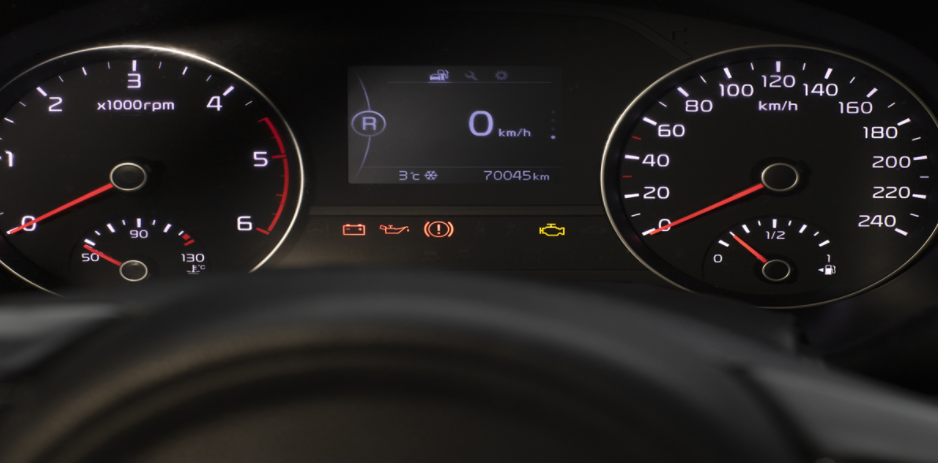The check engine light can cause uncertainty for drivers and indicates possible malfunctions. It’s an important warning that should be addressed promptly.
Others are reading now
While driving, a motorist may suddenly notice a light illuminating on the dashboard: the check engine light. This signal often creates uncertainty, as it indicates that something is wrong with the engine or one of the car’s systems.
Although it doesn’t always imply a serious fault, it is a call to have the car checked promptly.
Let’s explore the meaning of this light, the steps to take when it comes on, and which dashboard signals require the most attention to avoid problems.
What Does It Mean When the Check Engine Light Comes On?
When the check engine light illuminates on the car’s dashboard, it indicates that the vehicle’s computer has detected a fault or anomaly in the engine system or related components.
Also read
The activation of this light can be related to various causes, ranging from a simple faulty sensor to a serious problem with the fuel injection or engine ignition.
What to Do If the Check Engine Light Comes On in My Car
-
Consult the car manual: The first step is to review the user manual, as some models may have specific lights or alert codes that could be confused with the check engine light.
-
Observe the vehicle’s behavior: Check if the car exhibits additional symptoms such as loss of power, vibrations, noises, or if smoke is emitted. These signs may indicate that the problem is more serious and that you should avoid continuing to drive until a mechanic checks it.
-
Check the fuel tank cap: A loose fuel cap can trigger the check engine light. If this is the case, ensure it’s properly tightened.
-
Take the car for a professional diagnosis: Although some vehicles allow you to continue driving with the check engine light on, it’s best to take it to a garage for a system scan. A mechanic can use a diagnostic tool to identify the specific error code and determine the cause of the problem.
These Are the Most Important Dashboard Lights in a Car
-
Braking system: Indicates that the parking brake is engaged or there’s an issue with the brake fluid level.
-
Temperature warning: Informs that the engine is overheating and the cooling system needs to be checked.
-
Battery alert: Signals problems in the electrical system, such as a discharged battery or alternator failure.
-
ABS (Anti-lock Braking System): Warns about faults in the anti-lock system, which can affect braking safety.
-
Airbag failure: Indicates a malfunction in the airbags, which could compromise safety in case of an accident.
-
Glow plug indicator (diesel cars): Informs that the glow plugs are activated, which is essential before starting the engine.
Which Lights Require Special Attention
Although all dashboard lights are important, red lights and some yellow lights require more immediate attention:
-
Oil light (red): Indicates low oil pressure, which can cause severe and irreparable engine damage if not addressed quickly. It’s essential to stop the car and check the oil level.
-
Temperature warning (red): Signals that the engine is overheating, which can cause significant damage if you continue driving. Stop the car and wait for it to cool down before attempting to continue.
-
Braking system: If this light remains on after disengaging the parking brake, it could mean the brake fluid level is low or there’s a problem with the braking system, requiring urgent inspection.
-
Battery alert: If this light appears, the electrical system may be failing, and you could eventually lose the ability to start the car or use essential electrical elements such as lights or windshield wipers.
These lights require immediate attention, as ignoring them can lead to dangerous situations or costly breakdowns that compromise the vehicle’s functionality and safety.


